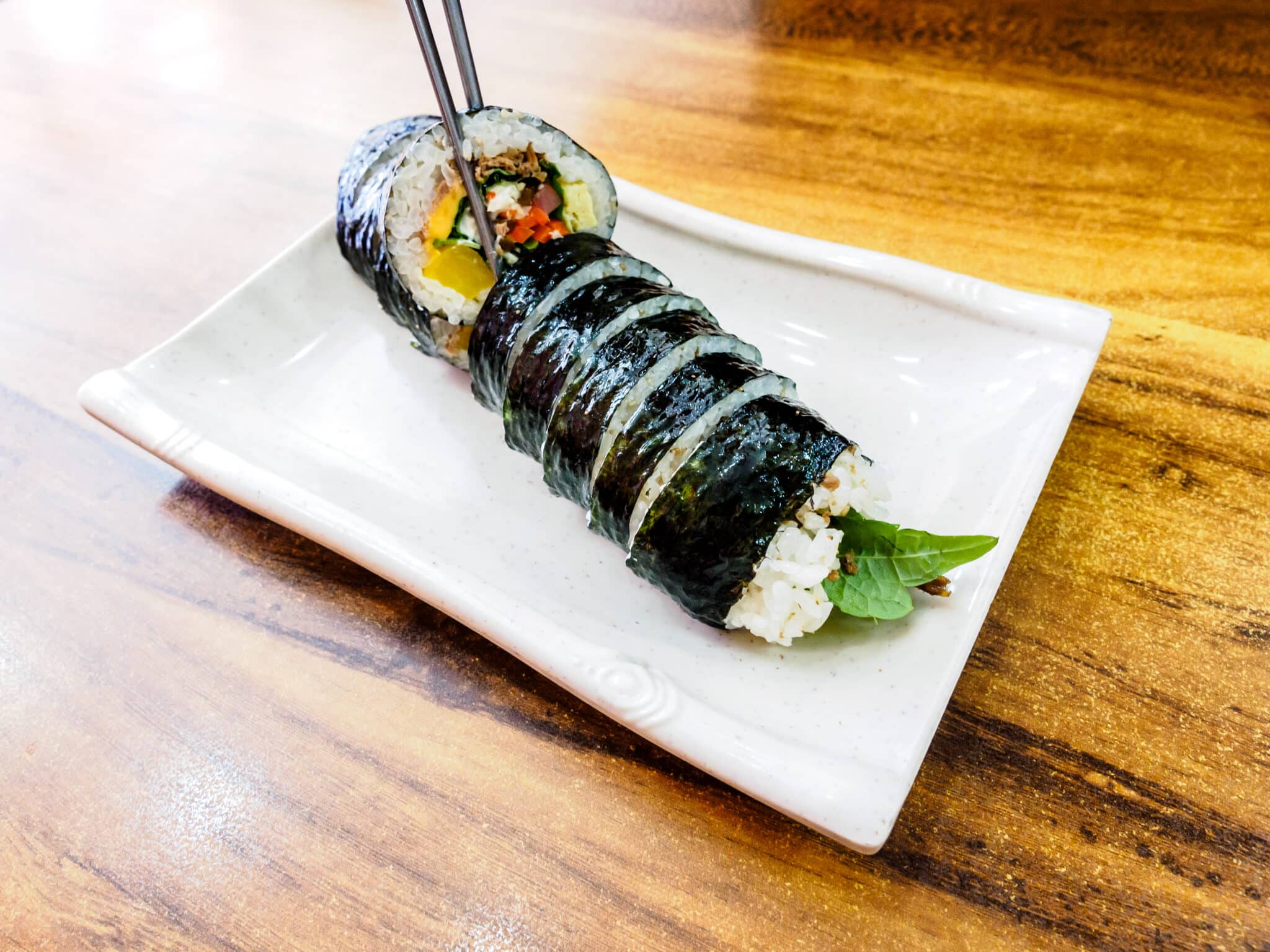
Mihae Kim Stefani is the Founder and Art Director of Gimga Group and KFoodinUS.com, where she merges design, marketing, and cultural advocacy to promote Korean cuisine in the U.S.
A graduate of the Corcoran School of Art + Design, Mihae began her career designing food spaces and launched her own Asian Gourmet Shop in Georgetown in 1987. Inspired by her mother’s early efforts to bring Korean cuisine to American hotels, she has dedicated her life to bridging cultures through food.
She played a key role in establishing the K-Food Pavilion at the RAMMYS and helped pass legislation recognizing Kimchi Day (11/22) in Washington, D.C. and Virginia.
Through her decades-long work with chefs, government agencies, and cultural institutions, Mihae has elevated Korean food visibility in the U.S. and continues to champion the people and stories behind it. Her work is rooted in purpose, creativity, and a passion for preserving and celebrating tradition.
Beef Gimbap • Korean Seaweed Rice Roll with Beef & Vegetables
Beef Gimbap is a Korean seaweed rice roll filled with seasoned beef, vegetables, and rice. It’s a flavorful, portable dish perfect for snacks or meals on the go.


Ingredients • Serves: 4 rolls
Rice:
-
4 cup Korean gimbap rice
-
1 Tbsp sesame oil
-
½ tsp salt
Beef Filling:
-
8 oz lean beef or ground beef
-
2 tsp soy sauce
-
1 tsp Korean cooking rice wine
- 1 tsp sugar
-
8 perilla leaves, optional
-
1 tsp sesame oil
-
1 garlic clove, minced
Vegetables:
-
1 bunch spinach, blanched, squeezed, seasoned with sesame oil and salt
-
2 medium carrots, julienned and stir-fried
-
4 strips danmuji, (yellow pickled radish)
-
4 strips burdock root (woowong), braised
Egg:
-
2 large eggs, beaten, cooked into omelet and sliced into strips
Wrap:
-
4 sheets gim (dried seaweed)
1. Prepare the Rice
-
Cook 4 cups Korean short-grain rice slightly dry for better rolling texture.
-
While still warm, mix the rice with 1 Tbsp sesame oil and ½ tsp salt. Let cool slightly before using.
2. Cook the Beef
-
Thinly slice or use ground 8 oz lean beef.
-
Stir-fry in a pan with 2 tsp soy sauce, 1 tsp Korean cooking wine, 1 tsp sugar, 1 tsp sesame oil, and 1 minced garlic clove until fully cooked.
3. Prepare the Vegetables
-
Blanch 1 bunch spinach, squeeze out excess water, and season with sesame oil and salt.
-
Julienne 2 medium carrots and stir-fry lightly with a pinch of salt.
-
Prepare 4 strips of pickled radish (danmuji) and 4 strips of braised burdock root.
4. Cook the Eggs
-
Beat 2 large eggs, cook into a flat, thick omelet, let cool, and slice into thin strips.
5. Assemble the Rolls
-
Place a sheet of gim (seaweed) shiny side down on a bamboo mat.
-
Spread about ¾ cup rice evenly, leaving about 2 inches at the top bare.
-
Lay a portion of each filling (beef, spinach, carrot, radish, burdock, egg) horizontally across the center of the rice.
-
Roll tightly using the mat, applying gentle but firm pressure as you go.
6. Finish & Slice
-
Brush the finished roll with a bit of sesame oil for sheen and flavor.
-
Using a sharp knife, slice each roll into bite-sized rounds.
Notes
-
Each roll uses about ¾ to 1 cup of cooked rice. 1.5 cups of raw rice yields about 4 rolls. Cooking 2 cups of rice can yield 5–6 rolls.
-
You can adjust fillings based on what you have or prefer. Omit any ingredient or add extras such as crab sticks, cucumber, or cheese.
-
Cucumber is a great substitute for spinach or a fresh-tasting addition. Lightly salt and squeeze before using to remove excess moisture. See “Vegan Kimbap” variations for prep tips.
